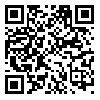Volume 10, Issue 4 (Volume 10, No4 2020)
jdc 2020, 10(4): 271-284 |
Back to browse issues page
Download citation:
BibTeX | RIS | EndNote | Medlars | ProCite | Reference Manager | RefWorks
Send citation to:



BibTeX | RIS | EndNote | Medlars | ProCite | Reference Manager | RefWorks
Send citation to:
Rastguo N, Lari R. New insights into the prevention and treatment strategies for hypertrophic scars and keloids. jdc 2020; 10 (4) :271-284
URL: http://jdc.tums.ac.ir/article-1-5420-en.html
URL: http://jdc.tums.ac.ir/article-1-5420-en.html
1- Department of Biology, Faculty of Science, Ferdowsi University of Mashhad, Mashhad, Iran
2- Department of Biology, Faculty of Science, Ferdowsi University of Mashhad, Mashhad, Iran * Department of Research of Zoological Innovations, Institute of Applied Zoology, Faculty of Sciences, Ferdowsi University of Mashhad, Mashhad, Iran ,rlari@um.ac.ir
2- Department of Biology, Faculty of Science, Ferdowsi University of Mashhad, Mashhad, Iran * Department of Research of Zoological Innovations, Institute of Applied Zoology, Faculty of Sciences, Ferdowsi University of Mashhad, Mashhad, Iran ,
Abstract: (6376 Views)
Hypertrophic scars and keloids are fibrosis abnormalities associated with the accumulation of collagen and extra cellular matrix components. These scars are caused by abnormal wound healing, which may occur after skin injuries caused by surgery, trauma, burns, etc. and may have a large impact on the patients’ quality of life. Hypertrophic scars and colloids in addition to aesthetic problems can cause functional disruption due to tissue contraction and itching. Large numbers of research are currently being performed in the area of scar prevention or treatment, but since the physiopathological mechanisms of scar formation have not been fully elucidated, the current strategies are still unsatisfactory. In this review, we discuss the recent biological advances in scar formation and current and future strategies for the prevention and treatment of hypertrophic and keloid scars.
Type of Study: Review |
Subject:
Special
Received: 2020/02/26 | Accepted: 2020/02/26 | Published: 2020/02/26
Received: 2020/02/26 | Accepted: 2020/02/26 | Published: 2020/02/26
Send email to the article author
| Rights and permissions | |
 |
This work is licensed under a Creative Commons Attribution-NonCommercial 4.0 International License. |





